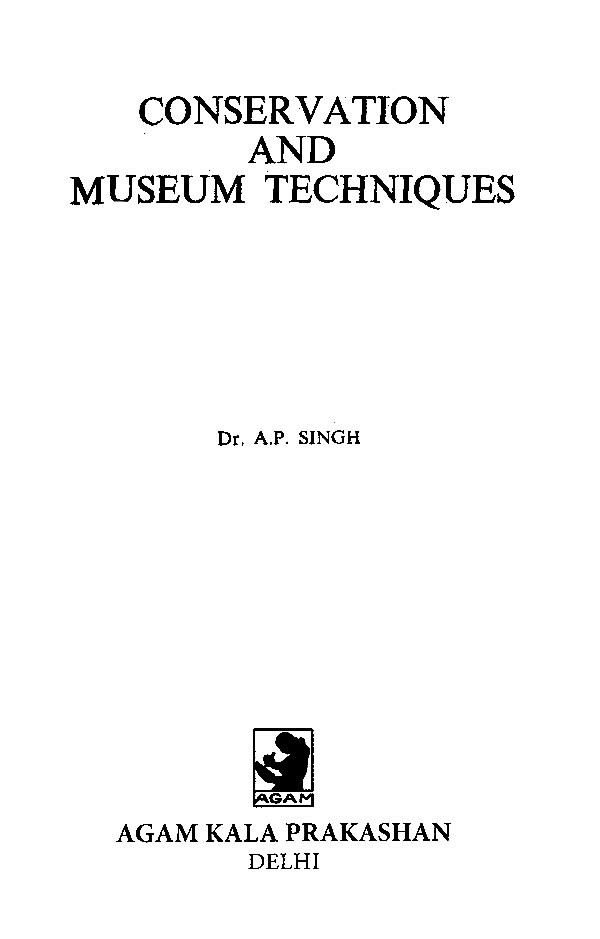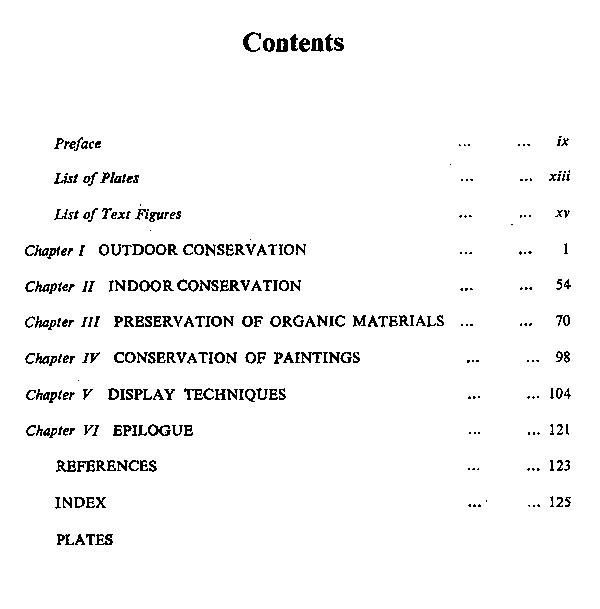
Conservation and Museum Techniques
Book Specification
| Item Code: | AZG169 |
| Author: | A.P. Singh |
| Publisher: | AGAM KALA PRAKASHAN, DELHI |
| Language: | ENGLISH |
| Edition: | 2019 |
| ISBN: | 9788173201882 |
| Pages: | 142 (Throughout B/w Illustrations) |
| Cover: | HARDCOVER |
| Other Details | 9.50x6.50 inch |
| Weight | 390 gm |
Book Description
The second part of the book is entirely devoted to indoor preservation, mainly in the laboratory. The methods for preserving stone, terracotta, pottery, glass, metal, etc. include vacuum flask impregnation, chemical treatment of metals both mechanical and electrical process. Preservation of organic materials like birch bark, palm leaf, paper, parchment, lather, bone, ivory, shell, etc, need special attention. Methods adopted for these have been explained. Painting murals or miniatures need special attention. A separate chapter entirely dealing with these highlights the causes for their decay and the remedial measures are incorporated. An entire chapter deals with museum display, techniques, lighting, mounting methods, pedestals for objects, etc. The book is well illustrated.
Dr. Singh's book entitled "Forts and Fortifications in India "is in press.
As these are irreparable and irrecoverable, Serious steps should be taken up by Government and occasionally even by cultural societies to be organized for the purpose. Government frames as a precaution, different acts as and when required to protect the cultural heritage; similarly different states also enact different laws for the same purpose.
Central and the concerned state departments of archaeology are implementing faithfully these acts enacted from time to time. Besides these private organizations have also shown their interest in this field. Scientists, technicians, engineers are thus essentially involved in such jobs, and science and latest technology have essentially helped us considerably.
It has become significant that some proper and latest manuals should be popularized which can help us in protecting and preserving our heritage. It is with this aim this monograph has been prepared to facilitate the novices and students as well in this endeavour. The experiences gained by the author in the field have been expressed in a more convincing manner rather than the theory evolved by European scholars who are working in altogether different atmosphere than India.
The text is divided into five major chapters and each chapter is further divided into sub-headings to analyze in detail the related problems. Thus chapter I deals with outdoor conservation of the monuments. It is further divided into three sub-sections viz. section (A) deals with the definition of conservation and different techniques of conserving and protecting the monuments.
**Contents and Sample Pages**















